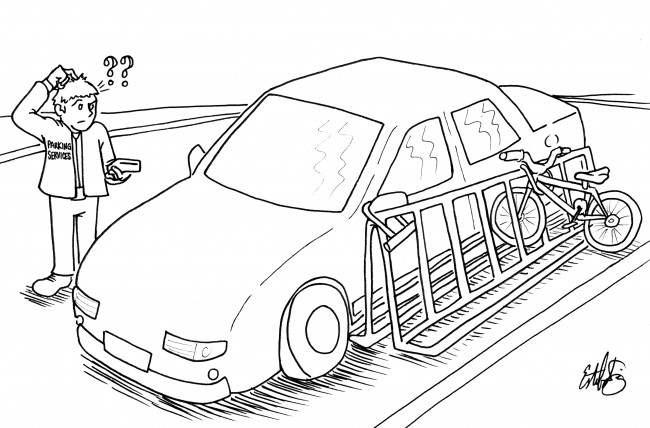Baylor has recently pulled out all the stops in its efforts to create a sustainable and picturesque campus. From the demolition of Ivy Square to the newest plans to fill in the roads surrounding of Fountain Mall, students have been subjected to the forces of the administration who are determined to fulfill the Baylor 2012 imperatives calling for “useful and aesthetically pleasing physical spaces” in order to “create a truly residential campus.”
To do this, the university is making campus more “pedestrian friendly” by adding additional grassy areas on campus – which has already happened at Ivy Square as well as the connecting road from Eighth Street to the Interstate 35 access road located by Brooks Residential College.
The administration is also attempting to remedy overcrowded parking, hoping the lack of parking issue will be resolved by asking students to park in outlying and unutilized spaces such as the Ferrell Center and the East Campus Parking Facility. The administration has offered the Baylor shuttle system to reach the main part of campus.
While these are efforts to create a greener, more eco-friendly [PDF] campus, the university has gone too far and plans to go further. The university plans to remove the parking in front of Moody Memorial and Jesse H. Jones libraries.
These new plans to eliminate parking spaces hinder student life. Masquerading these plans as “student friendly” isn’t right either, and the university has ignored, time and time again, the loud and consistent protests of students irate at the hassle the university has made out of getting to class.
The Ferrell Center and the East Campus Parking Facility, which have a combined 3,000 spaces, are not a safe or practical choice for its students.
The Ferrell Center, located across South University Parks Drive, would either require students to ride the bus to campus or to walk a little less than a mile along University Parks Drive — one of the busiest bordering streets of campus. The East Campus Parking Facility, located on Daughtrey Avenue, is a considerably safer place to park, but is not practical, as students who live off campus are required to drive to Daughtrey Avenue and still walk a significant distance just to reach the outskirts of campus.
It may seem trivial to some that students, including us, are complaining about having to walk to class. But, as the most frequent visitors to campus and the population most affected by these changes, why have we been left out of the equation? The decisions have had no student input.
The administration seems to expect that the aesthetic changes on campus and better awareness of parking alternatives – like biking – will fix our parking problems, but that’s only a pipe dream.
The fact is, the ease of driving one’s own car to campus is far superior to the convoluted, unpractical public transportation system the university has constructed.
Shuttles don’t stop at every house; in fact, they only frequent the major apartment complexes and few stops in between. Students who do not live near stops still have to use their car to get to a shuttle. At that point, it is easier and faster to simply drive to campus.
The students who must drive to campus are left with no alternative but to fight against other students for a parking spot and to find a way to make up the distance from across South University Parks Drive or Daughtrey Avenue.
The neverending changes for an eye-pleasing campus that ranks high on sustainability reports are continuing to anger students who have lost even more in the battle for convenient and safe parking.
If Baylor truly wishes to serve the needs of its tuition-paying students, then the administration should begin listening.
Haphazard changes to campus parking cannot be tolerated any more. Eventually, students will be at wit’s end and the administration should avoid major conflict by including students and implementing changes to improve parking, other than telling us to bike.
There is a point where green efforts actually hinder efficiency. We hit that point two green pastures ago.



